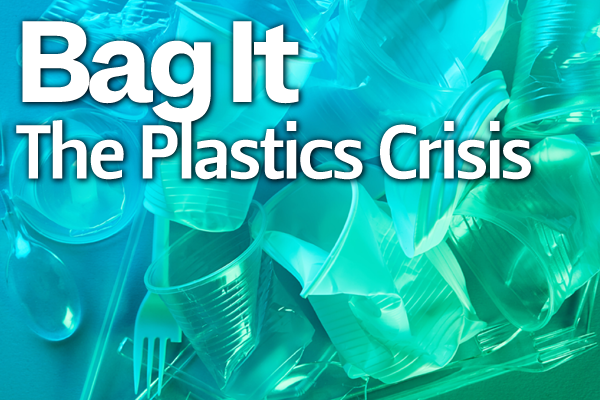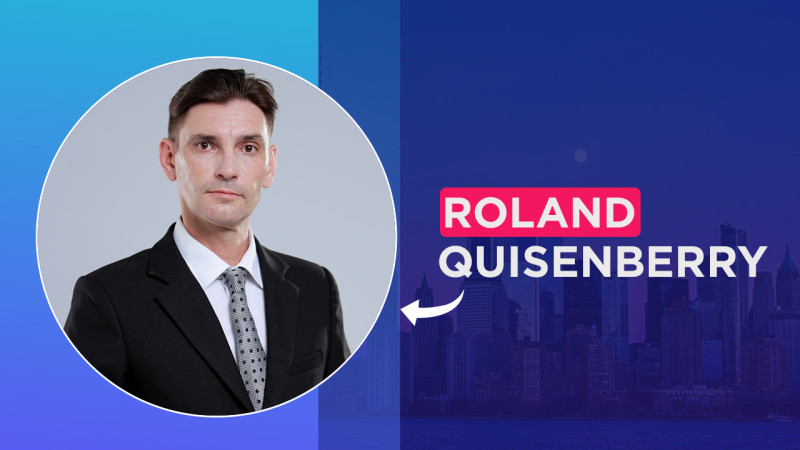Environmental Groups Eye a Potential Win with New York Packaging Bill
New York lawmakers appear poised to pass a new packaging reduction and recycling bill that would fundamentally reshape how single-use plastic waste is managed in the state.
It’s meant to take a big bite out of 20 million New Yorkers’ contributions to the global plight of pollution from single-use plastics, which constitute about 40 percent of all plastic waste. The bill, with provisions that also cover paper and glass, is also designed to complement the state’s obligations under its landmark 2019 climate law that requires a reduction in greenhouse gas emissions of 40 percent by 2030.
Several years in the making, the proposed Packaging Reduction and Recycling Infrastructure Act follows a “polluter pays” philosophy, putting the financial burden for managing packaging waste on the companies that generate it. The legislation would require a 50 percent reduction in plastic packaging waste in 12 years.
We’re hiring!
Please take a look at the new openings in our newsroom.
See jobsFour other states have passed similar laws, often called extended producer responsibility (EPR) laws. With several others now considering them, environmental and consumer advocates see the New York bill, sponsored jointly New York state Sen. Pete Harckham and Assemblymember Deborah J. Glick, both Democrats, as potentially the most comprehensive, addressing not only recycling but waste reduction while also banning some of the most toxic chemicals found in plastic packaging.
Advocates hope it becomes the new model for state action to curb single-use plastics, including snack wrappers, food containers, bottles and caps, which are often used for just a few minutes then tossed.
“That’s the goal—that we get it right in New York and then other states could follow the lead of New York,” said Jennifer Congdon, the Albany-based deputy director of Beyond Plastics, a national environmental group working to get the bill passed.
“Right now, we have a system where companies create products, they put it in packaging, the products are sold to people and then municipalities and taxpayers have to deal with the waste that is created,” Congdon said. “This (bill) would force companies to be a part of the solution instead of just the problem.”
The Senate version has half of its members signed on as co-sponsors, and the Assembly is two short of a majority, Congdon said. The Assembly version is making its way through committees and the Senate version could get a vote on the Senate floor soon.
But key segments of the business community are pushing back. They say they want to be part of a waste management solution, but argue the New York bill goes too far and will ultimately cost consumers through higher prices. And they fear lawmakers’ plans are unworkable.
“Just because somebody passes a law doesn’t mean it can be done,” said Ken Pokalsky, vice president of the Business Council of New York State. He takes issue with any assertion that there’s too much plastic being produced. “There are not great alternatives to plastic,” he said.
Creating a More Circular Economy
Globally, about 400 million metric tons of plastic waste are produced a year, and only about 10 percent gets recycled, with the recycling rate in the United States at about 6 percent.
The world is awash in plastic waste, filling streams and rivers that flow into lakes and oceans, and sickening or killing fish and other aquatic life that consume it or get tangled up in it.
Plastic doesn’t go away. It breaks down into tiny particles, where micro or even smaller nano plastics have been found in human feces and blood. The United Nations, which is working on a global plastics treaty, considers plastic waste to be part of a triple planetary threat of climate change, loss of biodiversity and pollution.

Environmental advocates say the New York bill, if passed and signed by Gov. Kathy Hochul, would help New York reduce the four pounds a day of municipal solid waste it produces per capita and mostly sends to landfills or incinerators.
New York has already done more than many states to tackle plastic waste, which, according to a new state solid waste management plan, adds up to 2.5 million tons per year, or about 14 percent of all municipal solid waste collected in the state.
The state cracked down on plastic bags with a ban on carryout plastic bags in 2020; environmental officials estimate more than 23 billion plastic bags had been used each year prior—many often ending up dangling in trees.
New York has banned disposable food service containers made with expanded polystyrene foam and loose pieces of polystyrene foam—commonly known as packing peanuts.
In November, New York Attorney General Letitia James filed a lawsuit against New York-based PepsiCo, which makes 85 different beverages and 25 snack foods brands, claiming the company contributes significantly to plastic pollution found along the Buffalo River. The lawsuit claims the company has “misled the public about its efforts to combat plastic pollution, while increasing its production and sale of single-use plastic packaging.”
After the suit was filed, PepsiCo distributed a statement to multiple news organizations declaring that it was “serious about plastic reduction and effective recycling, and has been transparent in our journey to reduce use of plastic and accelerate new packaging innovation.”
In an interview, Harckham, whose 40th Senate District includes Westchester and part of the Hudson Valley, said much more needs to be done to reduce packaging waste while simultaneously reducing greenhouse gas emissions blamed for causing disruptive climate change.
“We’re trying to create a more circular economy,” Harckham said of the bill, using a term generally meant to mean making products repeatedly from waste without tapping new natural resources. “It will take us away from single-use plastics that are obliterating our environment, our oceans or just being burned.”
Less waste means fewer greenhouse gases associated with extracting resources to make plastic, which come from fossil fuels, he said.
Over time, he said, businesses will need to rely more on reusable packaging or containers. Or they might switch to other materials such as paper or glass, eliminate unnecessary packaging, increase the recycled content in packaging, or change some products to reduce the size of plastic containers or the need for them entirely. For example, already some companies are replacing plastic jugs of liquid soaps mostly made of water with small, concentrated dry tablets, bars or sheets.
Putting Waste Burden on Packaging Producers
Local governments that oversee waste collection and recycling in the United States became saddled with the burden of what to do about mountains of plastic after China adopted its 2017 National Sword policy, which declared the country would no longer be a dumping ground for mixed plastic waste.
In New York, Harckham said, the state is running out of landfill space. New York already has 10 trash incinerators, which are controversial because of the pollution they emit. “They’re not popular to site so the solution is to reduce the amount of waste,” he said.

EPR laws typically require that the producers of products be responsible for the post-consumer management of their products, often overseen by what are sometimes called producer responsibility organizations.
These can also provide incentives to manufacturers to incorporate environmental considerations into the design of their products and packaging.
Such laws are in use now and covering at least 18 product categories in 33 states, from electronics to mercury thermostats to paint, according to the Product Stewardship Intitute, a nonprofit whose board members come from state government agencies. But packaging EPR laws in the U.S. are newer—Maine was the first in 2021—and are being adopted decades behind similar efforts in Europe.
The Maine law focused on shifting costs of managing packaging waste to producers, relying on third-party organizations to do much of the work under state oversight. It did not set specific targets or deadlines for plastic waste reduction, leaving that and other details to a rule-making process that’s now underway. The law calls for state regulators to set fees that incentivize recyclability, and reduced toxicity, of packaging material.
Since Maine, three other states have passed EPR laws for packaging: Colorado, Oregon and California.
The California bill, passed in 2022, was particularly notable because it covers the most populous state—39 million people—and is the most ambitious to become law so far. Among its provisions, the state must, by 2032, cut by 25 percent single-use plastic packaging and food service ware; recycle 65 percent of single-use plastic packaging and food service ware; and make 100 percent of single-use packaging and plastic food service ware recyclable or compostable.
But for some critics, Beyond Plastics among them, the California law potentially allows for easy exemptions, gave the industry too much control over itself and may have left the door open to chemical recycling, which in some cases environmental groups consider a form of incineration, not actual recycling.
The New York bill would be the strongest in part because of mandated waste reduction and recycling targets and because it would require the phase out of 15 toxic chemicals used in plastics, including vinyl chloride, lead, mercury, formaldehyde and synthetic per- and polyfluoroalkyl substances, or PFAS, said Judith Enck, Beyond Plastics founder and president and a former Environmental Protection Agency regional administrator. It also requires lawmakers to make key policy decisions instead of turning them over to the producer responsibility organization, she said.
Congress Stalled on Plastics Bill
Variations between existing state laws aside, the push is on for even more of these packaging laws. That drive is largely influenced by a growing awareness of the global plastic problem, said Scott Cassel, the founder and executive director of the Product Stewardship Institute, which holds workshops in states to help bring divergent interests together around the management of consumer waste.
In addition to New York, states actively working on packaging EPR laws include New Hampshire, Washington, Rhode Island, Massachusetts, Tennessee and New Jersey, Cassell said, with others also in various stages of consideration.
Congress could also bring extended producer responsibility to all states by passing the Break Free From Plastic Pollution bill, sponsored by Sen. Jeff Merkley (D-Ore.) and Rep. Jared Huffman (D-Calif.). It was first introduced in 2020 but has failed to gain traction in a sharply divided Congress.
Lack of action in Congress has left the issue up to states to sort out.
The EPR effort in New York began several years ago, with various interest groups staking out their positions and substantial resistance from vested business interests.
“The producers didn’t want anything to do with it and really opposed it,” said Cassel. “The waste management industry is not keen on it. Their business models have been in place for many years, and the fewer changes the better for them.”
The environmental community, Casselsaid, “wants to see their interests, which relate to toxics, waste reduction and reuse.”
What’s come together, he said, “is a good bill.”
Chemical Recycling Rebuffed For Now
Various industry groups are still fighting the New York bill in Albany.
While the bill targets companies like Amazon that produce extreme amounts of package, said Steve Ammerman, spokesman for the Farm Bureau of New York, smaller businesses, including dairy farms and wineries, may find compliance challenging and costly.
A Feb. 10 opposition statement from 54 companies or associations, including the Plastics Industry Association, Dupont, Chemours, and The Toy Association, said New York’s proposed law wrongly strays from a goal of boosting recycling to banning certain materials from packaging due to their chemical makeup.
“This bill also creates a Toxic Packaging Task Force that would recommend additional toxic substances to be banned, potentially targeting hundreds of substances without sound-scientific basis and creating uncertainty for businesses in commerce,” the memo said.
Across the country, the chemical industry has been trying to grease the regulatory skids for “chemical” or “advanced” recycling, terms used to describe a variety of chemical-based, often energy-intensive industrial processes. In New York, the industry is fighting for those technologies—such as pyrolysis, gasification or solvolysis—to be included in the New York bill, so far to no avail.
The industry argues that chemical recycling breaks down plastic waste into its molecular components so that some of it can be used as feedstocks for new plastics, offering options for plastics that are difficult to recycle by mechanical means that rely on shredding, melting and reshaping.
In December, Craig Cookson, the senior director of plastics sustainability with the American Chemistry Council, published an op-ed in the local paper, the Albany Times Union, arguing for “modernizing our recycling infrastructure through advanced recycling technologies.”
In a written statement from ACC, Cookson called for beginning “a genuine dialogue” over how “businesses can partner with government to achieve the goals of this legislation.”
But chemical recycling of plastics on a commercial scale remains limited and controversial, with some methods, including pyrolysis, amounting to little more than incineration, or turning plastics into more fossil fuels, according to its environmental critics.
A similar bill last year backed by Hochul allowed for chemical recycling but did not advance. With this new bill, Harckham said, a compromise—one of a number made to address industry concerns—was reached that will allow the state legislature to revisit the definition of recycling every three years.
“We know technology at some point will have to play a part in this so we can’t shut the door on technology,” Harckham said.
Still, the chemical industry keeps pushing.
He said other compromises were made to make compliance easier for small businesses and farms, and businesses with difficulty can seek a waiver.
Congdon praised Harckham and Glick for keeping chemical recycling out of the bill.
Beyond Plastics and the International Pollutants Elimination Network issued a report last fall that documented decades-old challenges to the chemical recycling of plastics. Titled “Chemical Recycling: A Dangerous Deception,” the 159-page paper examined 11 chemical recycling plants in the United States that were at least partly operating as of September, often with government support.
The challenges at those plants include a low output of recycled plastics; the production of hazardous waste like toxic chemicals and heavy metals; fires and oil spills at production units; and questions of commercial viability, the report said. The technology “has failed for decades, continues to fail, and there is no evidence that it will contribute to resolving the plastics pollution crisis,” the two advocacy groups concluded.
Share this article
Disclaimer: The copyright of this article belongs to the original author. Reposting this article is solely for the purpose of information dissemination and does not constitute any investment advice. If there is any infringement, please contact us immediately. We will make corrections or deletions as necessary. Thank you.







